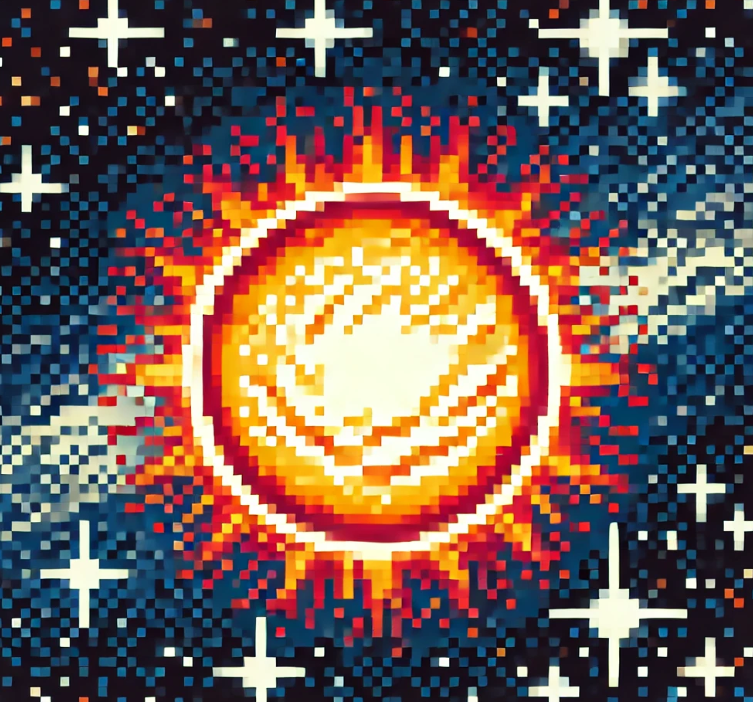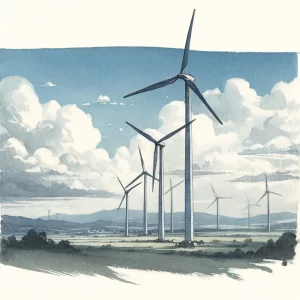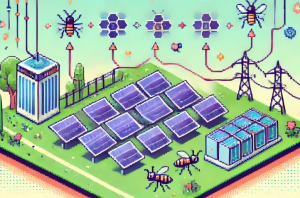
Sunquakes: The Solar Phenomenon That Shakes the Cosmos
When you think of earthquakes, you likely picture scenes of rumbling ground, cracking buildings, and chaos. Now, imagine something like that happening on the Sun—giant, invisible waves shaking the surface of our star. These solar quakes, or “sunquakes,” may not topple buildings, but they provide groundbreaking insights into the Sun’s mysterious processes, and understanding them could change how we view solar activity forever.
The Hidden Tremors of the Sun
In 2020, researchers Sharykin and Kosovichev made a remarkable discovery: over the course of Solar Cycle 24, spanning from 2008 to 2019, they detected 94 sunquakes generated by solar flares. These flares, which are massive explosions of energy on the Sun’s surface, can trigger waves deep within the Sun, rippling out like a stone thrown into a pond. For decades, scientists knew these seismic events could happen, but Sharykin and Kosovichev’s findings revealed just how common—and powerful—these sunquakes are.
But why should we care? The answer lies in the Sun’s enormous influence on Earth. Solar activity, like flares, can disrupt satellites, power grids, and even communication systems. By studying sunquakes, we can better understand the energy released during solar flares and potentially predict how these massive eruptions could affect us.
A Surprising Discovery: Not All Solar Flares Are Equal
One of the most surprising findings from this research was that weaker solar flares caused some of the most intense sunquakes. You might assume that only the largest, most explosive solar flares—classified as X-class—would cause significant sunquakes. However, the study revealed that even lower-energy M-class flares could trigger powerful seismic waves. In fact, some X-class flares didn’t generate sunquakes at all.
Imagine a fireworks show: you expect the biggest explosions to cause the loudest booms, but sometimes, a smaller firework makes an unexpectedly powerful sound. The same is true with solar flares and sunquakes. The research suggests that it’s not just the size of the flare that matters but how quickly the energy is released—what scientists call the flare’s impulsiveness. The more impulsive a flare, the more likely it is to shake the Sun’s surface.
What Exactly Are Sunquakes?
You might be wondering, what exactly is a sunquake? It’s not something we can feel or see in the traditional sense. Instead, sunquakes are acoustic waves that move through the Sun’s interior, much like how sound waves travel through air. These waves bounce around inside the Sun, reflecting off different layers and eventually making their way back to the surface, where they create ripples. Thanks to advanced instruments, such as the Helioseismic Magnetic Imager on NASA’s Solar Dynamics Observatory, we can detect these ripples and study their behavior.
But here’s where it gets really fascinating: unlike on Earth, where earthquakes are caused by shifting tectonic plates, sunquakes are set off by sudden bursts of energy from solar flares. These flares release high-energy particles that slam into the Sun’s surface, causing shockwaves that reverberate through its layers. By studying these waves, scientists can learn more about the Sun’s internal structure, helping us unlock secrets about its core and deeper processes.
The Quest to Understand Sunquakes
Even though we now know that sunquakes are more common than once thought, many mysteries remain. For instance, why do some solar flares produce sunquakes while others don’t? And what exactly causes these seismic waves to form in the first place? Scientists have several theories, ranging from the impact of high-energy particles to changes in the Sun’s magnetic fields, but there’s still no definitive answer.
What we do know is that sunquakes tend to occur in areas with complex magnetic fields. These areas are often the sites of large sunspots, which are dark patches on the Sun’s surface caused by magnetic activity. The interaction between these magnetic fields and solar flares likely plays a role in generating sunquakes, but further research is needed to understand the exact mechanisms at play.
Why Sunquakes Matter to Us
At this point, you might be thinking, “This is cool, but how does it affect me?” Sunquakes may seem like a distant, abstract concept, but their implications reach far beyond the Sun’s surface. Solar flares, the very events that cause sunquakes, can have a direct impact on our daily lives. When a solar flare erupts, it can send bursts of radiation and charged particles into space, potentially causing geomagnetic storms on Earth.
These storms can disrupt GPS systems, knock out power grids, and interfere with radio communications. In extreme cases, they could even cause widespread blackouts, as happened in Quebec in 1989. By studying sunquakes and the solar flares that trigger them, we can improve our ability to forecast these events, giving us more time to prepare for the potential disruptions they cause.
The Future of Sunquake Research
With the new catalog of sunquake events, scientists now have a treasure trove of data to explore. This catalog opens up exciting opportunities for future research, allowing scientists to conduct statistical analyses and dive deeper into the physics of sunquakes.
By continuing to study sunquakes, we can improve our understanding of solar flares and the energy they release. This knowledge could lead to better predictions of solar activity and help us protect our technology-dependent world from the potential dangers of space weather.
Join the Conversation
What do you think about the possibility of predicting solar flares and their impacts on Earth? How might this research change our approach to preparing for space weather events?
Explore and Learn with Science
Dive into groundbreaking research and inspiring stories with ‘This Week in Science’! Perfect for teachers and science enthusiasts, our free weekly newsletter expands your horizons in teaching and learning. Join us today and reshape your engagement with science. If you liked this blog, please share it! Your referrals help This Week in Science reach new readers.



